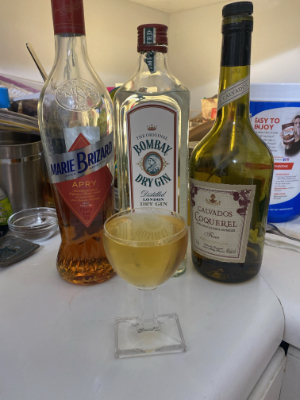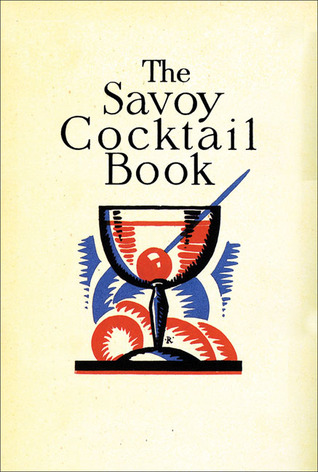I’m bored, so I’m taking random cocktail recipes from The Savoy Cocktail Book (1930), giving them a try, and modifying/improving them if I think it’s necessary, and reporting my findings here.
Ping-Pong Special
 (6 people)
(6 people)
Carefully shake together 3 glasses of Sloe Gin and 3 glasses of Italian Vermouth with half a dessertspoonful of Angostura Bitters and a dessertspoonful of sugar syrup or Curaçao. Serve with a cherry and a piece of lemon rind.
I interpreted this as
- 1.5 oz sloe gin
- 1.5 oz sweet vermouth
- .25 oz orange curaçao
- 2–3 dashes Angostura
It was okay. It was a bit cloying, so I tossed it and remade it, reducing the amount of vermouth. Still cloying.

Ping-Pong Special (2)
- 1.5 oz sloe gin
- .75 oz sweet vermouth
- .25 oz orange curaçao
- .25–.5 oz Gran Classico amaro
I added the Gran Classico for some bitterness. It was not satisfactory.
Then I thought, if Angostura was the bittering agent in the original, why not Angostura Amaro?

Ping-Pong Special(3)
- 1.5 oz sloe gin
- .75 oz sweet vermouth
- .5 oz Amaro di Angostura
- .25 oz orange curaçao
- Angostura bitters
It was okay. It was not a revelation.
I gave up — which I’m beginning to suspect is going the be the outcome of most of these experiments.
However, the Amaro di Angostura reminded me of a very good cocktail indeed: The Smoky Quartz, invented for me by the head bartender of AnonymouS Bar in Prague. Go read about it.
 And finally, the evening began.
And finally, the evening began.
SAVOY VARIATIONS SCORECARD:
- Savoy: 1
- Dale: 1
- Sink: 2


 Perhaps the gin was the issue. A more floral gin might take the edge off.
Perhaps the gin was the issue. A more floral gin might take the edge off. How about an Old Tom gin? And what if we switched to an apricot liqueur, which would be sweeter?
How about an Old Tom gin? And what if we switched to an apricot liqueur, which would be sweeter?
 Last ditch effort: stick with the pomegranate gin, but go back to the apricot brandy.
Last ditch effort: stick with the pomegranate gin, but go back to the apricot brandy. (6 people)
(6 people)
 The Savoy is the work of the immortal
The Savoy is the work of the immortal 